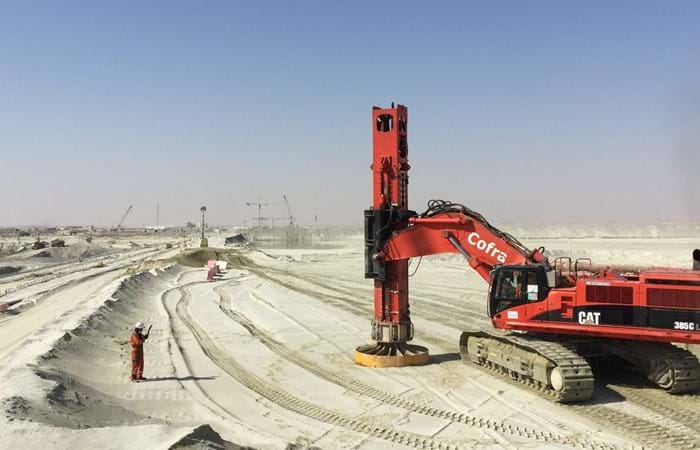New land is often created in near shore conditions for the expansion of ports and major cities. The most common method for reclaiming land is to place the new material on top of the old surface which can consist of any material, from very low strength clays or silts to sands or gravels. Depending on the requirements for future use, construction constraints or seismic regulations, the fill material and the material in the natural ground could require improvement.
In the case of compressible materials in the natural soil our consolidation or element techniques help to accelerate the consolidation, transfer load to bearing strata and reduce the residual settlements after handover of the new land. The techniques result in an increase the strength of the materials to allow for thicker lifts or steeper slopes during construction. In the case of silty/sandy materials below or inside the reclamation our element and compaction techniques can provide the adequate solution to meet the specifications and liquefaction requirements. Our consolidation, element and deep compaction techniques can be used in offshore conditions, before any, or part of the fill is placed. The most common application is onshore from the surface of the new land. Our surface compaction techniques are based on dropping a weight and hence only applicable on onshore conditions.
In most cases there are multiple solutions available to arrive at a compliant reclamation. We are happy to think along to see if ground improvement is required to improve the engineering properties of the materials. We are experts in finding the most optimal and economical solution for your project. Our capabilities in the mentioned techniques together with selected references are provided in the following sections.

